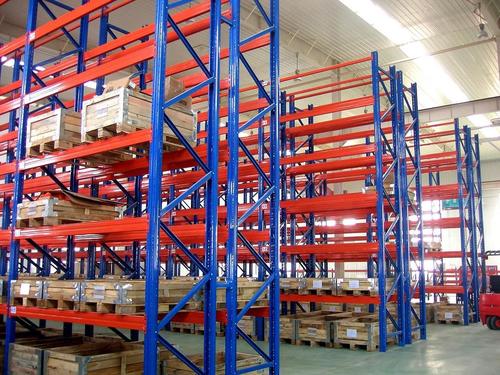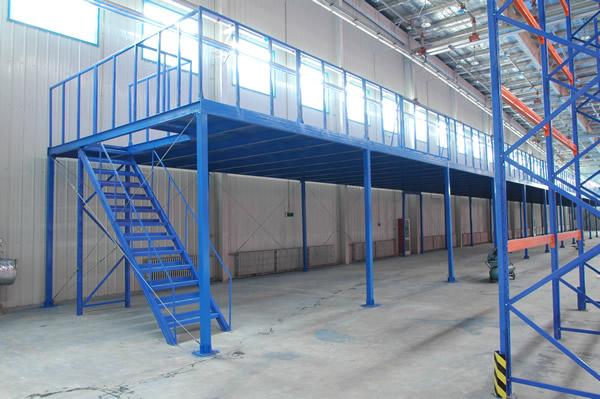In today's fast-paced industrial landscape, efficient storage solutions are crucial for maximizing productivity and maintaining organized workflows. Industrial storage shelving systems stand out as a backbone for warehouses, factories, and distribution centers, offering robust support for heavy loads and diverse inventory. These systems are designed to withstand harsh environments while promoting safety and accessibility. Whether you're managing raw materials, finished goods, or tools, understanding the nuances of industrial storage shelving systems can lead to significant improvements in space utilization and operational efficiency. This article delves into six key aspects of these systems, providing a comprehensive overview to help you make informed decisions. From their fundamental types to long-term benefits, we'll explore how industrial storage shelving systems can be tailored to meet specific needs without compromising on durability or cost-effectiveness. By the end, you'll have a clearer picture of why investing in the right industrial storage shelving systems is a strategic move for any business.

Industrial storage shelving systems are specialized structures engineered for storing heavy and bulky items in commercial and industrial settings. Unlike standard shelving, these systems are built with high-strength materials such as steel, ensuring they can handle substantial weight capacities—often ranging from a few hundred pounds to several tons per shelf. The primary purpose of industrial storage shelving systems is to optimize vertical space, allowing businesses to store more items in a smaller footprint. They typically feature adjustable shelves, modular designs, and customizable configurations to accommodate various item sizes and shapes. Common components include upright frames, beams, and decking, which can be assembled in different ways to create pallet racking, cantilever shelving, or mezzanine systems. Industrial storage shelving systems are essential in industries like manufacturing, logistics, and retail, where inventory turnover is high, and organization is critical. By providing a stable and scalable storage solution, these systems help reduce clutter, enhance safety, and streamline operations. When selecting industrial storage shelving systems, factors like load capacity, environmental conditions, and compliance with safety standards must be considered to ensure optimal performance.
The advantages of integrating industrial storage shelving systems into your facility are manifold. First and foremost, these systems significantly improve space efficiency by utilizing vertical storage, which is often underused in many warehouses. This vertical approach can double or even triple storage capacity without expanding the physical footprint, leading to cost savings on real estate. Additionally, industrial storage shelving systems enhance accessibility and organization, allowing workers to quickly locate and retrieve items, thereby reducing downtime and increasing productivity. Safety is another critical benefit; well-designed industrial storage shelving systems minimize the risk of accidents by providing secure storage for heavy loads, often incorporating features like safety locks and anti-tip mechanisms. Durability is a hallmark of industrial storage shelving systems, as they are constructed to resist corrosion, impact, and wear, ensuring a long lifespan even in demanding environments. Moreover, these systems support inventory management by facilitating better categorization and rotation, which is essential for industries dealing with perishable goods or time-sensitive materials. By investing in high-quality industrial storage shelving systems, businesses can achieve a faster return on investment through improved operational flow and reduced labor costs. Overall, the benefits of industrial storage shelving systems extend beyond mere storage, contributing to a more efficient and safer workplace.
Industrial storage shelving systems come in various types, each suited for specific applications and load requirements. Understanding these variations is key to selecting the right system for your needs. One common type is pallet racking, which is ideal for storing palletized goods and often includes selective, drive-in, or push-back designs. Selective pallet racking, for instance, allows direct access to each pallet, making it perfect for high-turnover inventory. Another type is cantilever shelving, which features arms extending from a central column, ideal for long or bulky items like pipes or lumber. Boltless shelving is a popular choice for its easy assembly and adjustability, often used in retail backrooms or smaller warehouses. For heavier loads, structural shelving systems offer enhanced strength with bolted connections, capable of supporting immense weights. Mezzanine shelving systems create additional levels within a facility, effectively doubling storage space without new construction. Mobile shelving systems, which can be moved on tracks, are excellent for maximizing space in tight areas. Each type of industrial storage shelving systems has unique features, such as adjustable heights, modular components, and compatibility with accessories like dividers or bins. When choosing among industrial storage shelving systems, consider factors like inventory type, available space, and budget to ensure the best fit. By exploring these options, businesses can tailor their industrial storage shelving systems to meet specific operational demands.
Selecting the right industrial storage shelving systems requires careful evaluation of several factors to ensure they align with your business goals. Load capacity is paramount; you must assess the weight and size of items to be stored to choose systems with adequate strength and stability. Industrial storage shelving systems are rated for specific capacities, so overloading can lead to safety hazards. Next, consider the available space and layout of your facility. Measurements of floor area, ceiling height, and aisle widths will influence the type and configuration of industrial storage shelving systems you can install. For instance, high-ceiling facilities might benefit from tall pallet racking, while narrow spaces may require compact mobile systems. Material composition is another critical factor; galvanized steel or powder-coated finishes offer resistance to moisture and chemicals, making them suitable for harsh environments. Adjustability and scalability are also important, as flexible industrial storage shelving systems can adapt to changing inventory needs without requiring complete replacement. Budget constraints play a role, but it's essential to balance cost with quality—cheaper options might save money upfront but could lead to higher maintenance costs. Additionally, compliance with safety standards, such as OSHA guidelines, ensures that your industrial storage shelving systems meet regulatory requirements. Finally, think about installation and maintenance; some systems are easy to assemble in-house, while others may need professional setup. By thoroughly evaluating these factors, you can invest in industrial storage shelving systems that provide long-term value and efficiency.

Proper installation and maintenance are crucial for the longevity and safety of industrial storage shelving systems. During installation, it's vital to follow manufacturer guidelines precisely to avoid structural weaknesses. Start by preparing the site, ensuring the floor is level and clean to prevent instability. Assemble the components step-by-step, checking that all bolts, beams, and connectors are securely fastened. For larger industrial storage shelving systems, professional installation is recommended to ensure compliance with engineering standards. Once installed, regular maintenance is necessary to keep the systems in optimal condition. This includes periodic inspections for signs of damage, such as bent beams or loose connections, which should be addressed immediately to prevent accidents. Cleaning industrial storage shelving systems regularly helps prevent dust buildup and corrosion, especially in humid or chemical-exposed environments. Lubricating moving parts, like those in mobile shelving, ensures smooth operation. Additionally, training staff on proper usage—such as not exceeding weight limits or climbing on shelves—can extend the life of industrial storage shelving systems. Implementing a maintenance schedule, with documented checks every few months, helps identify issues early. For businesses with high-throughput operations, investing in durable industrial storage shelving systems with minimal maintenance requirements can reduce downtime. By adhering to these best practices, you can maximize the ROI of your industrial storage shelving systems and maintain a safe workplace.
The evolution of industrial storage shelving systems is shaped by technological advancements and changing industry demands. In recent years, there has been a shift towards smarter, more integrated systems. For example, the incorporation of IoT sensors in industrial storage shelving systems allows for real-time inventory tracking, reducing errors and improving supply chain visibility. Automation is another trend, with robotic systems being integrated with industrial storage shelving systems to enable automated picking and storing, enhancing efficiency in large warehouses. Sustainability is also becoming a priority; manufacturers are developing eco-friendly industrial storage shelving systems using recycled materials and energy-efficient production processes. Modular designs are gaining popularity, offering greater flexibility to reconfigure industrial storage shelving systems as needs change. Additionally, safety innovations, such as enhanced load monitoring and earthquake-resistant features, are making industrial storage shelving systems more reliable. As e-commerce and just-in-time manufacturing grow, the demand for scalable and adaptable industrial storage shelving systems will increase. Businesses should stay informed about these trends to future-proof their investments. By embracing innovations, industrial storage shelving systems will continue to play a vital role in optimizing industrial operations.
In conclusion, industrial storage shelving systems are indispensable tools for modern businesses seeking to enhance storage efficiency and safety. From their diverse types to the benefits they offer, these systems provide a solid foundation for organized and productive operations. By considering key factors during selection and adhering to maintenance best practices, you can ensure that your industrial storage shelving systems serve your needs for years to come. As technology advances, these systems will evolve, offering even greater capabilities. Ultimately, investing in the right industrial storage shelving systems is a strategic decision that can drive growth and competitiveness.
 Wechat
Wechat
 Whatsapp
Whatsapp